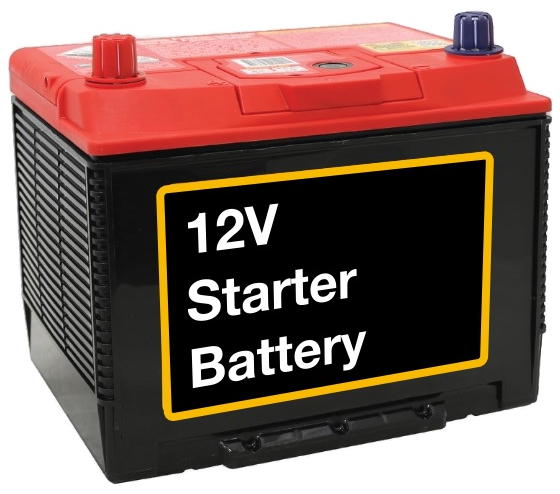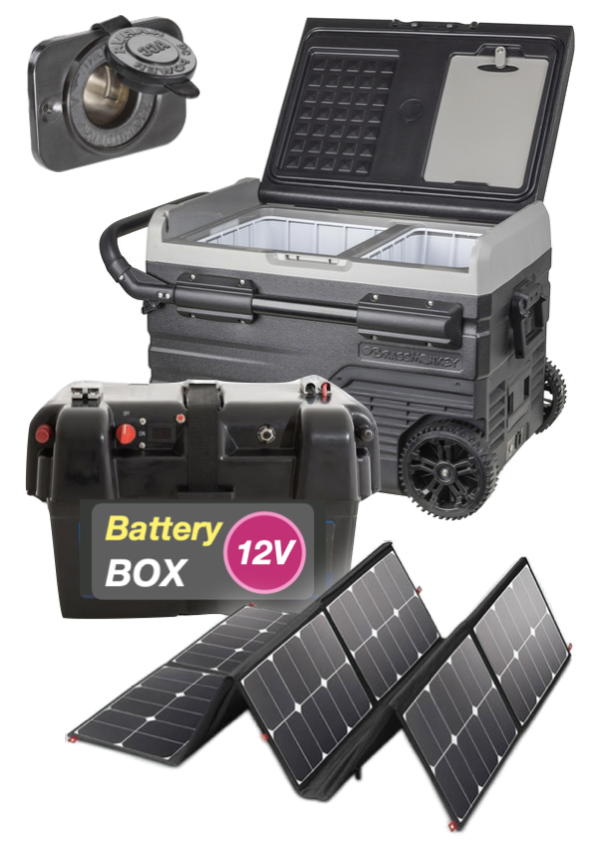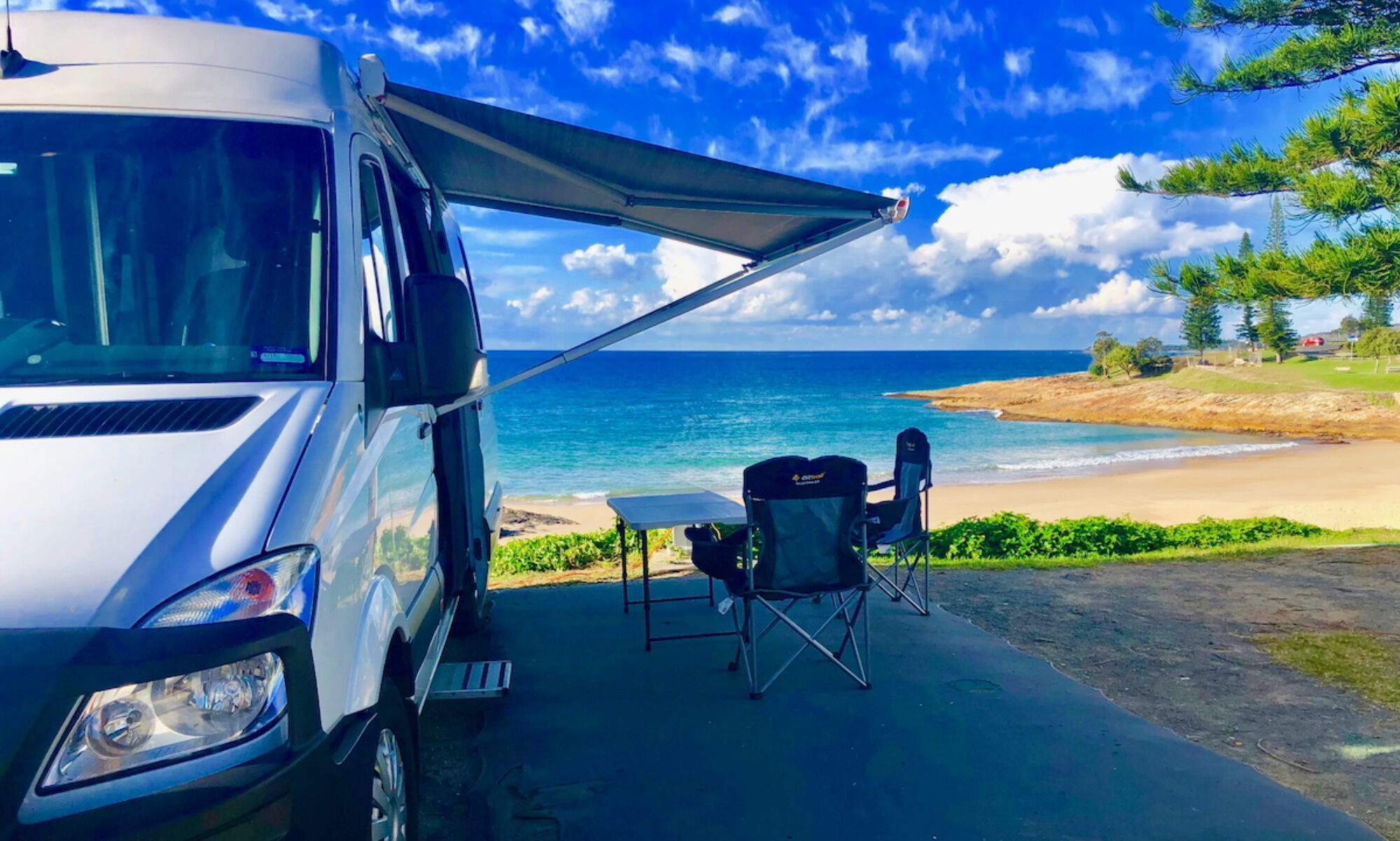<<< DIY – Portable Fridge and 12V Power on the Go
A friend recently purchased an electric vehicle – a Polestar – which has a 12V accessory socket in the rear luggage area.
He is a keen camper, and will be connecting a portable fridge to the 12V socket when travelling – but how long can the fridge stay powered with the vehicle turned off?
Battery capacity
 A regular 12V camping battery is rated at around 1200 Wh, or 100 Ah, which will run a portable fridge for around 2-3 days.
A regular 12V camping battery is rated at around 1200 Wh, or 100 Ah, which will run a portable fridge for around 2-3 days.
By comparison, the batteries powering electric vehicles are massive. The battery that runs the Polestar has a capacity of 78,000 Wh, at 400V.
If a battery of that size was supplying 12V (for running the fridge) that would be a capacity of 6500 Ah, which would run a portable fridge for about 270 days before it needed a recharge!
Sounds sensational – but don’t get too excited…..
Getting connected
 The main engine battery in an EV battery is 400V, not 12V. To overcome this voltage issue, most EVs don’t have their accessory sockets connected to the main battery. It is apparently more efficient (and reliable) to have a separate battery for running 12V accessories – lights, cameras, alarm, central locking, modem (where fitted), etc.
The main engine battery in an EV battery is 400V, not 12V. To overcome this voltage issue, most EVs don’t have their accessory sockets connected to the main battery. It is apparently more efficient (and reliable) to have a separate battery for running 12V accessories – lights, cameras, alarm, central locking, modem (where fitted), etc.
However, some EVs – those with the a Vehicle 2 Load (V2L) facility – are supplied with electrical infrastructure and cables to connect the main battery to external accessories.
To get more of an idea about this setup, read the specs for the 2023 MG EV (with V2L).
If you have an EV with V2L, then plugging in your camping fridge to use the main battery could be relatively easy, but from what I have seen (MG EV) the Type 2 adaptor cable has a 230V AC outlet, not a 12V DC outlet. It connects to the regular charging port. This appears to be designed more for short use scenarios, like a coffee machine, rather than a camping fridge.
Until I can test one of these setups (and see if a 12V DC adaptor is available) then I expect that the camping fridge scenario in an EV will be similar to connecting up to a battery in a regular ICE vehicle – using the 12V accessories battery.
The 12V auxiliary/accessories battery in an EV is similar to a regular ICE car starter battery. As well as powering the various 12V accessories, it is also used to power the EV’s Engine Control Unit (ECU) and the startup electronics for the main car battery. If the 12V auxiliary battery is flat your EV won’t be able to start, and the main battery won’t be able run the propulsion motor/s. The accessories battery is kept topped up by the main battery, via an electronic converter, when the car is in Drive.
Like the starter battery in a car with an Internal Combustion Engine (ICE) the EV accessory battery is not designed to run accessories long term – it is not a deep cycle battery.
In fact, from what I can glean from EV manufacturer web sites, the accessory battery in most EVs is an older-style lead acid battery – although Tesla may be moving to use Lithium batteries for the accessory battery.
So, when you plug your fridge into the 12V accessory socket in your non-V2L EV, the same issues and limitations apply as they did for your old ICE vehicle….
-
- When you turn off your vehicle, the accessory socket will be disconnected from the battery;
- If you leave the vehicle turned ON, to keep the accessory outlet active with 12V accessories connected, you will eventually flatten the battery and not be able to drive your car.
Powering your fridge
 The bottom line is that despite having a huge battery bank to power your EV, you will still most likely need a separate 12V camping battery to run your fridge when you have turned off the vehicle and setup your camp site.
The bottom line is that despite having a huge battery bank to power your EV, you will still most likely need a separate 12V camping battery to run your fridge when you have turned off the vehicle and setup your camp site.
A 12V camping battery can be installed in a Powered Battery Box, and strapped into the rear of your EV.
The fridge can be running from the 12V accessory socket while the car is driving, then plugged into the Battery Box when you reach your campsite.
A 120Ah AGM battery fitted in your Battery Box will run your fridge for around 3 days.
A 120Ah Lithium battery fitted in your Battery Box will run your fridge for around 5 days
You can extend the run time of your fridge by recharging your AGM or Lithium battery using a solar panel, connected to your Battery Box with a solar controller.
